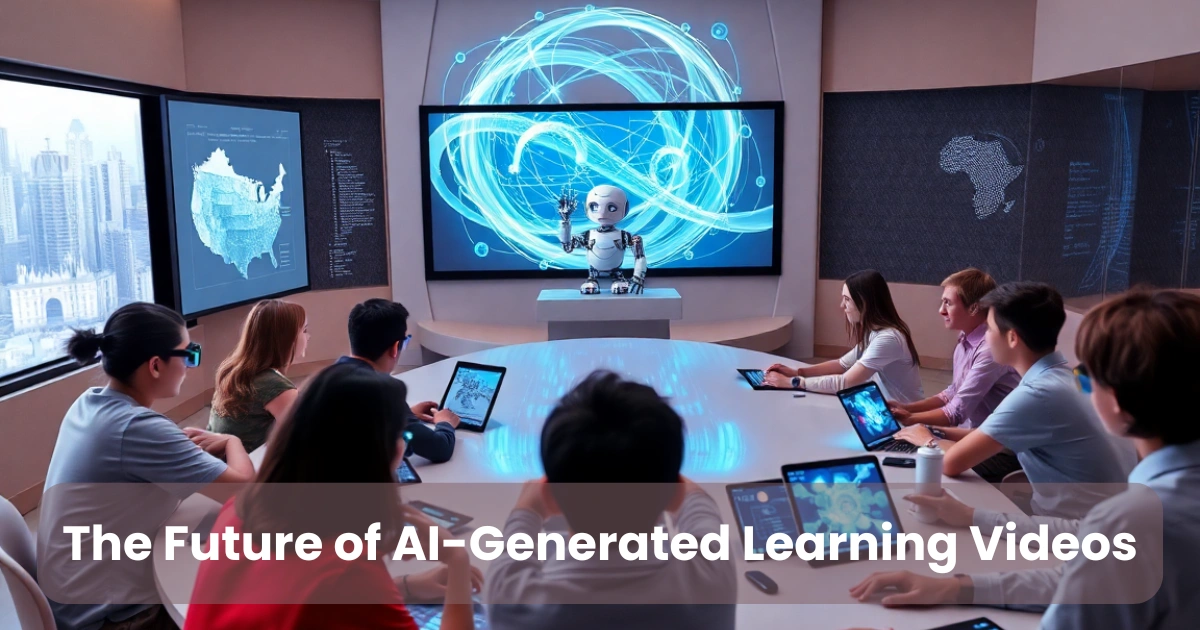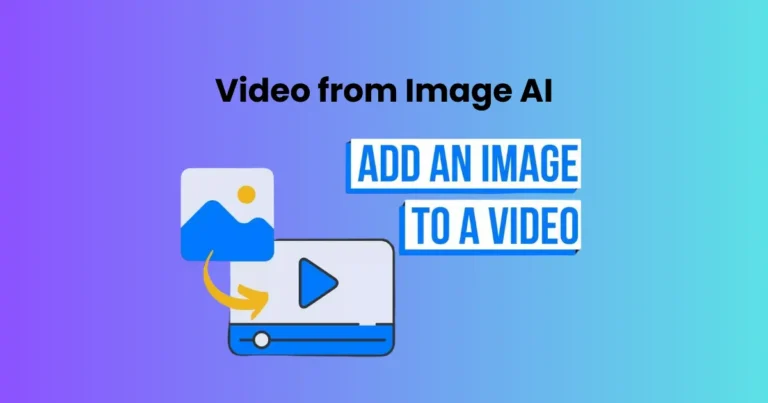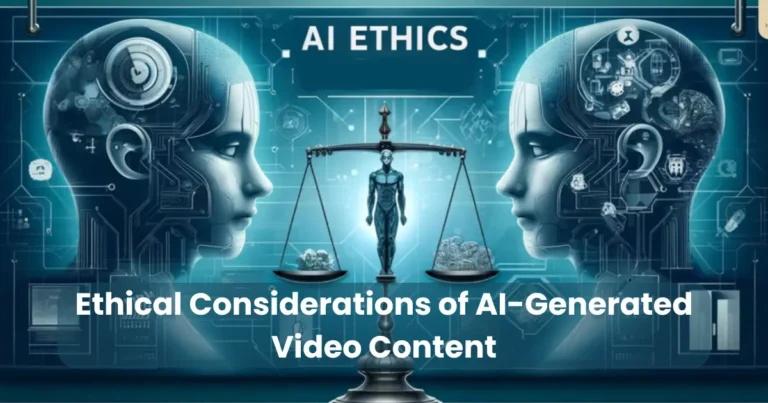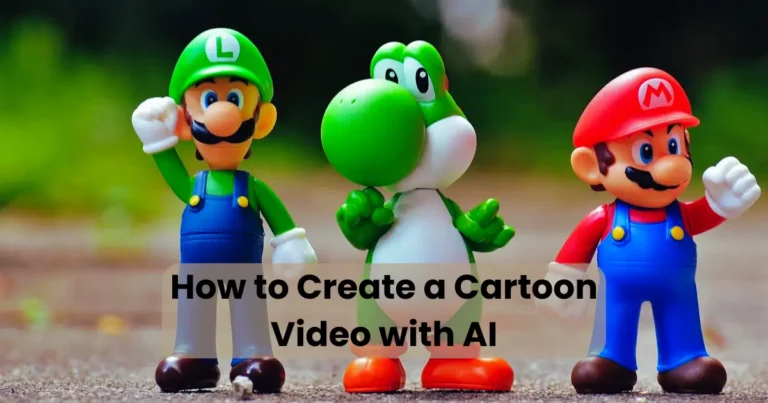AI-Generated Learning Videos: Revolutionizing Education in 2025

Contents
- 1 What Are AI-Generated Learning Videos?
- 2 Why AI-Generated Learning Videos Are Gaining Popularity
- 3 Benefits of AI-Generated Learning Videos
- 4 Challenges of AI-Generated Learning Videos
- 5 Tools for Creating AI-Generated Learning Videos
- 6 How AI-Generated Learning Videos Are Used in Education
- 7 Tips for Creating Effective AI-Generated Learning Videos
- 8 The Future of AI-Generated Learning Videos
- 9 Case Studies: AI-Generated Learning Videos in Action
- 10 Addressing Common Concerns
AI-generated learning videos are transforming the way we approach education, offering dynamic and personalized content that captivates learners. In 2025, artificial intelligence has taken center stage, creating tailored video lessons that adapt to individual needs, making learning more accessible and engaging. These videos leverage cutting-edge algorithms to deliver high-quality instruction, interactive elements, and real-time feedback, ensuring maximum time efficiency for students and educators alike. This article explores the rise of AI-generated learning videos, their benefits, challenges, and how they are reshaping education for the better.
What Are AI-Generated Learning Videos?
AI-generated learning videos are educational content created using artificial intelligence tools. These tools analyze vast amounts of data to produce videos that explain complex topics, demonstrate skills, or provide step-by-step guidance. Unlike traditional videos, AI-generated content can adapt to a learner’s pace, preferences, and knowledge level. For instance, platforms like Synthesia and Descript use AI to generate lifelike avatars, voiceovers, and visuals, streamlining content creation for maximum time efficiency.
Moreover, AI-driven platforms can translate content into multiple languages, incorporate interactive quizzes, and update material in real-time based on user feedback. As a result, these videos cater to diverse audiences, from K-12 students to professionals seeking upskilling. By automating the production process, AI reduces the time and cost of creating high-quality educational videos, making them a game-changer in modern learning.
Why AI-Generated Learning Videos Are Gaining Popularity
The surge in popularity of AI-generated learning videos stems from their ability to address key challenges in education. First, they offer personalization. AI algorithms analyze a learner’s progress and tailor content to their specific needs, ensuring maximum time spent on relevant material. For example, a student struggling with algebra can receive targeted video explanations, while advanced learners access more challenging content.
Second, accessibility plays a huge role. AI-generated videos are available 24/7, allowing learners to study at their convenience. Platforms like Coursera and Khan Academy have integrated AI to deliver bite-sized, engaging videos that fit busy schedules. Additionally, these videos often include captions, translations, and visual aids, making them inclusive for diverse learners, including those with disabilities.
Finally, cost-efficiency drives adoption. Traditional video production requires significant resources, including hiring actors, editors, and animators. AI eliminates these barriers by automating scriptwriting, voiceovers, and editing, enabling educators to create professional-grade content in a fraction of the time. Consequently, schools, universities, and businesses are embracing AI-generated learning videos to maximize their impact with minimal investment.
Benefits of AI-Generated Learning Videos

1. Enhanced Engagement
AI-generated learning videos captivate audiences with interactive elements like quizzes, simulations, and gamified content. For instance, tools like Articulate 360 integrate AI to create immersive scenarios that keep learners hooked. By incorporating visuals, animations, and real-world examples, these videos make complex topics more relatable, ensuring maximum time retention.
2. Scalability
AI allows educators to produce large volumes of content quickly. Whether it’s a single lesson or an entire course, AI tools can generate videos at scale without compromising quality. This scalability is ideal for massive open online courses (MOOCs) or corporate training programs, where thousands of learners need access to consistent, high-quality material.
3. Personalization and Adaptability
AI-driven videos adapt to individual learning styles. For example, platforms like EdApp use AI to adjust video pacing based on a learner’s performance, ensuring they grasp concepts before moving forward. This adaptability maximizes learning outcomes and minimizes frustration, as students receive content tailored to their needs.
4. Cost and Time Efficiency
Creating traditional educational videos can take weeks and cost thousands of dollars. AI-generated videos, however, streamline the process. Tools like Lumen5 transform text-based content into engaging videos in minutes, saving educators and organizations valuable time and resources. This efficiency allows for rapid content updates, keeping material relevant in fast-evolving fields like technology or medicine.
5. Global Reach
AI-generated videos break language barriers by offering real-time translations and subtitles. Platforms like Veed.io enable creators to produce multilingual content, making education accessible to global audiences. This feature is particularly valuable for international students or professionals seeking to upskill in a second language.
Challenges of AI-Generated Learning Videos
Despite their advantages, AI-generated learning videos face some hurdles. First, content accuracy can be an issue. AI relies on data inputs, and if those inputs are flawed, the resulting videos may contain errors. Educators must review AI-generated content to ensure it aligns with academic standards.

Second, lack of human touch can limit emotional engagement. While AI can mimic voices and avatars, it may not replicate the warmth or relatability of a human instructor. To address this, some platforms blend AI-generated content with human-led discussions to create a balanced learning experience.
Third, technological barriers exist. Not all learners have access to high-speed internet or devices capable of streaming AI-generated videos. This digital divide can hinder adoption, particularly in underserved regions. However, initiatives like offline video downloads and mobile-friendly platforms are helping bridge this gap.
Finally, overreliance on AI poses a risk. Educators must avoid using AI as a one-size-fits-all solution. Combining AI-generated learning videos with traditional teaching methods ensures a holistic approach, maximizing time spent on meaningful learning.
Tools for Creating AI-Generated Learning Videos
Several platforms have emerged as leaders in AI-driven video creation. Here are some popular tools revolutionizing the space:

- Synthesia: This platform uses AI to create lifelike avatars and voiceovers, allowing users to generate professional videos without filming. It’s ideal for creating tutorials, training modules, or product demos.
- Descript: Known for its AI-powered editing, Descript simplifies video production by converting text to speech and offering easy-to-use editing tools. It’s perfect for educators with limited technical skills.
- Lumen5: This tool transforms blog posts, articles, or scripts into engaging videos using AI-driven templates. It’s a favorite for content creators looking to repurpose written material.
- Veed.io: Veed.io offers AI-powered editing, subtitles, and translations, making it easy to create accessible videos for diverse audiences.
- Pictory: Pictory converts long-form content into short, engaging videos with AI-generated visuals and voiceovers, ideal for quick lessons or social media.
These tools empower educators to create AI-generated learning videos with minimal effort, ensuring maximum time efficiency and high-quality output.
How AI-Generated Learning Videos Are Used in Education

1. K-12 Education
In K-12 settings, AI-generated learning videos simplify complex subjects like math, science, or history. For example, a teacher can use AI to create a video explaining photosynthesis with animations, quizzes, and real-world examples. These videos cater to different learning paces, helping students grasp concepts at their own speed.
2. Higher Education
Universities use AI-generated videos to supplement lectures, especially in online or hybrid courses. Platforms like Coursera leverage AI to create modular content, allowing students to focus on specific topics. This approach saves time and enhances understanding, particularly for technical subjects like engineering or data science.
3. Corporate Training
Businesses rely on AI-generated learning videos for employee training. From onboarding to compliance training, AI tools create engaging, scenario-based videos that simulate real-world challenges. For instance, a company might use Synthesia to produce a video on workplace safety, complete with interactive elements to test employee knowledge.
4. Language Learning
AI-generated videos are a boon for language learners. Platforms like Duolingo use AI to create immersive video lessons that teach pronunciation, grammar, and vocabulary. With real-time feedback and translations, these videos make language acquisition more effective and engaging.
5. Professional Development
Professionals seeking to upskill or reskill benefit from AI-generated learning videos on platforms like LinkedIn Learning. These videos cover topics like project management, coding, or marketing, offering bite-sized lessons that fit busy schedules.
Tips for Creating Effective AI-Generated Learning Videos
To maximize the impact of AI-generated learning videos, follow these tips:
- Define Clear Objectives: Before creating a video, outline the learning goals. Whether it’s explaining a concept or teaching a skill, clarity ensures the content stays focused.
- Use High-Quality Data: AI relies on input data to generate content. Provide accurate, well-structured scripts or source material to avoid errors.
- Incorporate Interactivity: Add quizzes, polls, or clickable elements to keep learners engaged. Tools like Articulate 360 make this easy.
- Optimize for Mobile: Ensure videos are mobile-friendly, as many learners access content on smartphones. Use platforms like Veed.io to optimize for smaller screens.
- Keep It Concise: Aim for short, focused videos (5-10 minutes) to maintain attention and maximize time efficiency.
- Test and Iterate: Gather feedback from learners and use AI analytics to refine content. Platforms like EdApp provide insights into viewer engagement and performance.
The Future of AI-Generated Learning Videos
The future of AI-generated learning videos is bright, with advancements in AI technology promising even greater innovation. For instance, virtual reality (VR) integration could create immersive learning experiences, allowing students to explore historical events or scientific phenomena in 3D. Additionally, real-time personalization will become more sophisticated, with AI adapting content on the fly based on learner reactions.

Moreover, AI-driven analytics will provide deeper insights into learner behavior, helping educators tailor content for maximum impact. As AI continues to evolve, we can expect more interactive, accessible, and inclusive videos that cater to diverse learning needs. By 2030, AI-generated learning videos could dominate education, offering unparalleled flexibility and efficiency.
Case Studies: AI-Generated Learning Videos in Action
Case Study 1: Khan Academy
Khan Academy uses AI to create personalized learning videos for students worldwide. By analyzing user data, the platform delivers tailored math and science lessons, resulting in a 30% increase in student engagement compared to traditional methods. The AI-generated videos are concise, visually appealing, and available in multiple languages, ensuring maximum time efficiency.
Case Study 2: Google’s Corporate Training
Google employs AI-generated learning videos for employee training on topics like cybersecurity and cloud computing. Using tools like Synthesia, Google creates scenario-based videos that simulate real-world challenges. This approach has reduced training time by 40% while improving knowledge retention.
Case Study 3: Duolingo
Duolingo’s AI-generated language videos help millions learn new languages. By incorporating voice recognition and interactive exercises, these videos adapt to user proficiency, leading to a 25% faster learning curve compared to traditional methods.
Addressing Common Concerns
Some educators worry that AI-generated learning videos might replace teachers. However, AI is a tool to enhance, not replace, human instruction. By automating repetitive tasks like content creation, AI frees teachers to focus on mentoring and critical thinking exercises. Additionally, concerns about data privacy are valid. Platforms must comply with regulations like GDPR and ensure secure handling of learner data.
Another concern is the learning curve for educators. While AI tools are user-friendly, some teachers may need training to use them effectively. Platforms like Descript offer tutorials and support to ease this transition, ensuring educators can leverage AI for maximum time efficiency.
Conclusion
AI-generated learning videos are revolutionizing education by offering personalized, engaging, and cost-effective content. From K-12 classrooms to corporate training rooms, these videos cater to diverse learners, breaking barriers of time, language, and accessibility. While challenges like content accuracy and technological access remain, advancements in AI are addressing these issues rapidly. By embracing tools like Synthesia, Descript, and Lumen5, educators can create high-quality videos that maximize learning outcomes. As we move toward 2030, AI-generated learning videos will continue to shape the future of education, making it more inclusive, efficient, and impactful.






